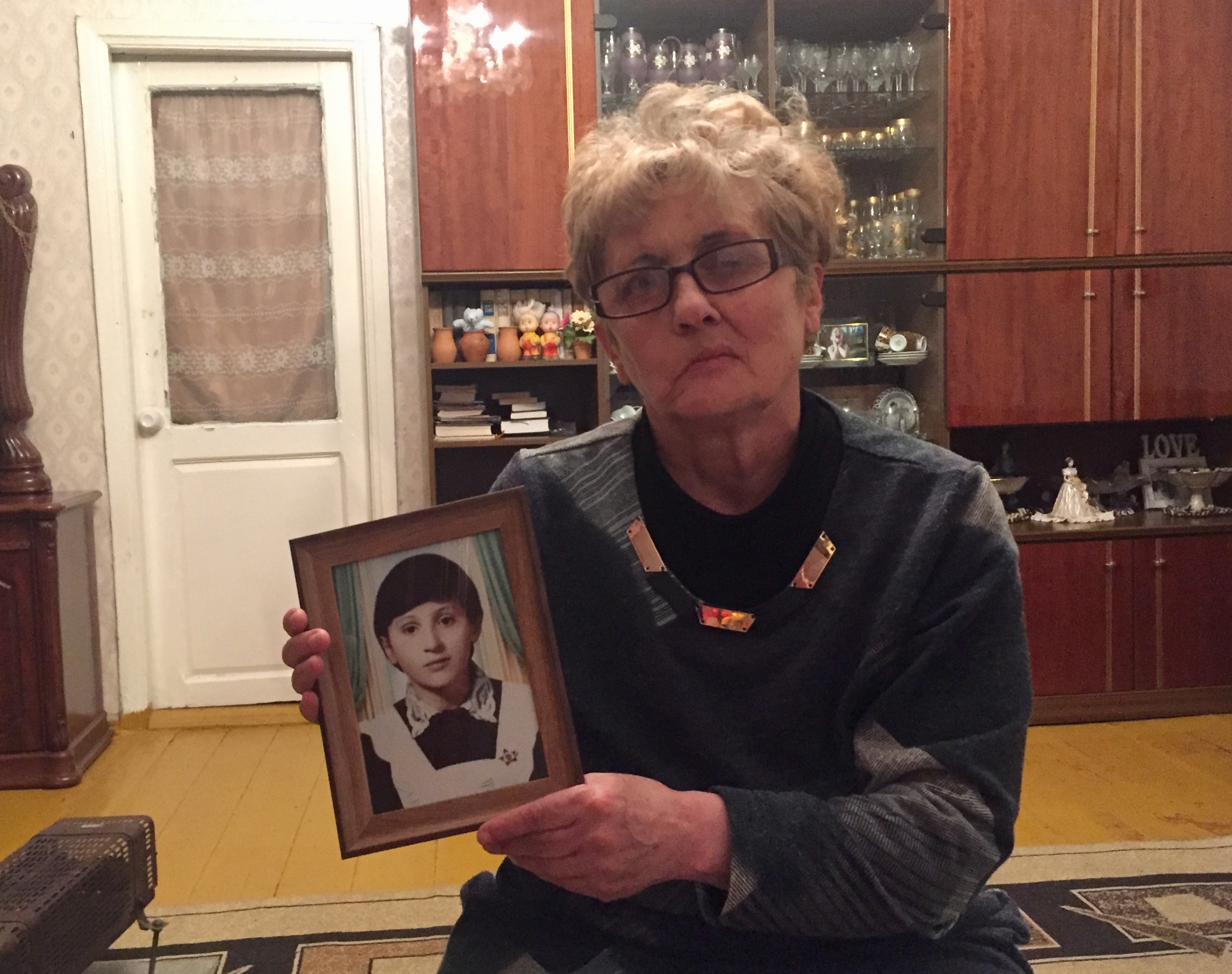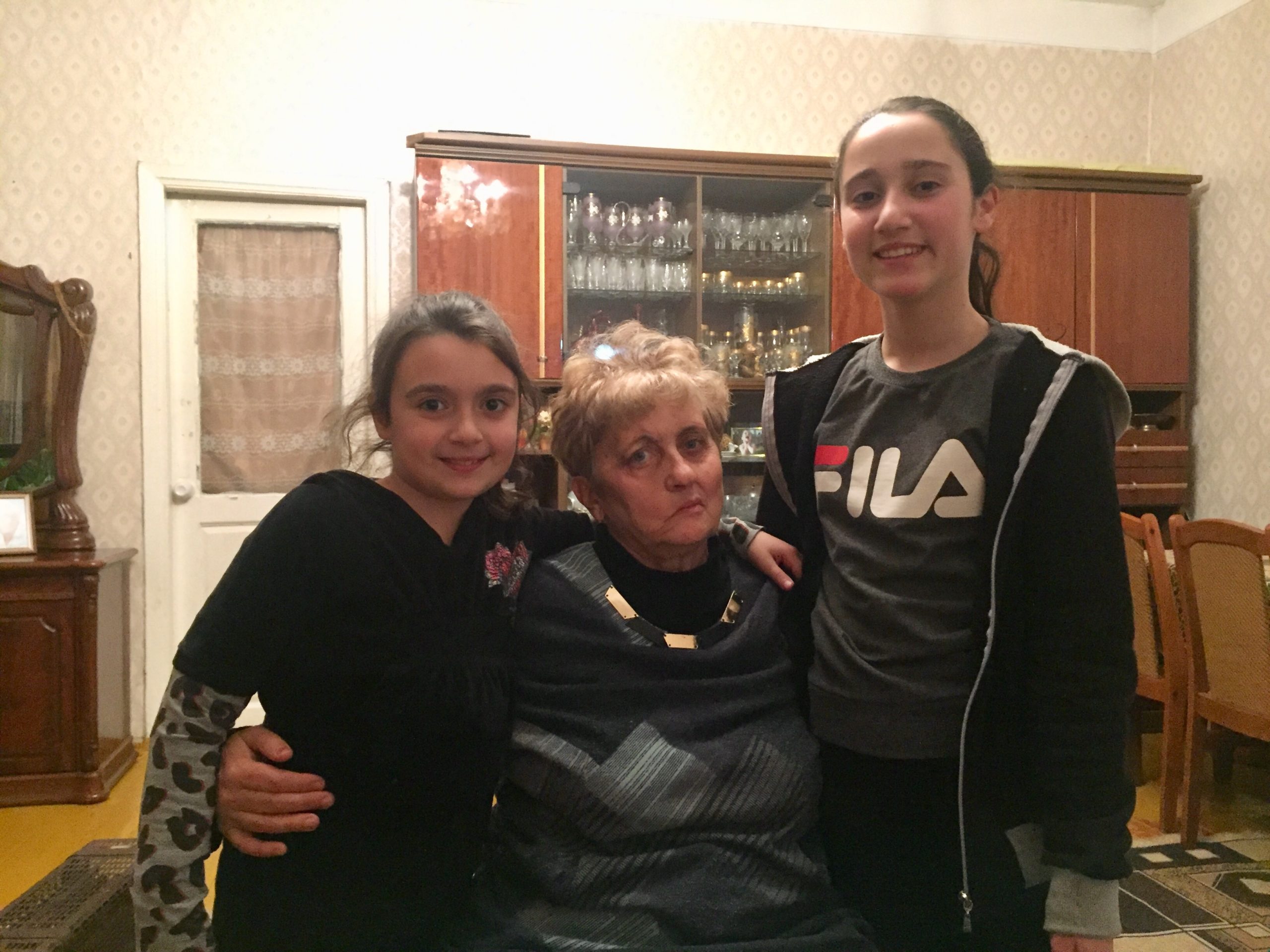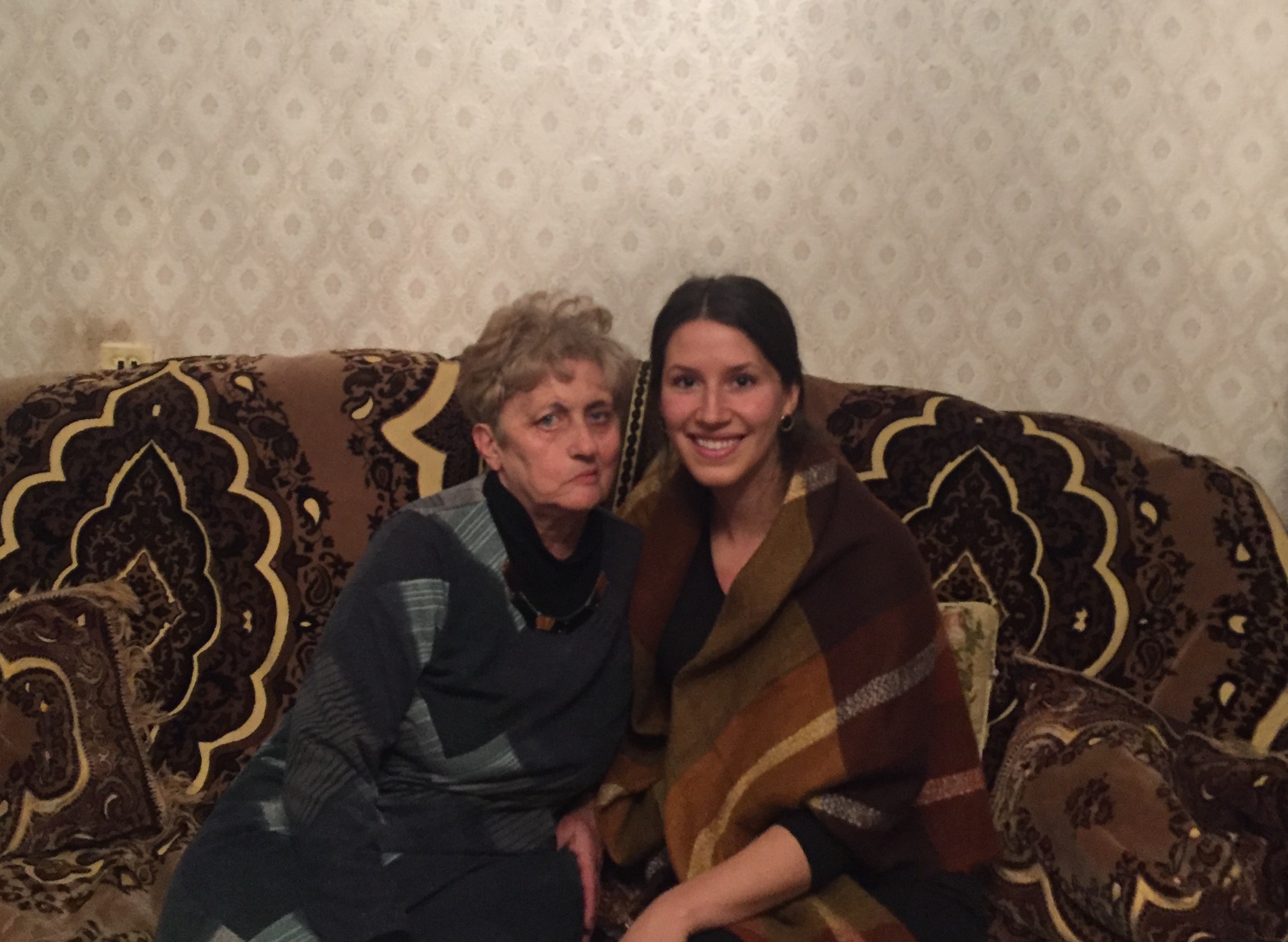When I think about it now, it’s fitting that I first met Raya near a railroad. I didn’t know it at the time, but for her, trains hold many memories. They are a symbol of rewarding work and of shelter, but also of near death. They hold the potential for escape from a city of struggle and tragedy. But Raya never tried to escape. She bravely stayed put.
—
It was eight months ago when I boarded a marshrutka en route to Gyumri at Yerevan’s Sasuntsi Davit railway station. As the minibus headed out of the city center, the woman next to me, carefully dressed and in her mid-sixties, heard my accented Armenian and asked where I was from. “Washington,” I responded, expecting that the conversation would end after a few exchanged pleasantries. But the woman—who introduced herself as Raya—kept talking with me.
One of the first subjects we broached was English. Raya loved it. She peppered our conversation (primarily in Armenian) with little English sentences and words she had jotted down and practiced in a cherished notebook. I had never met a Gyumri local her age who was so fascinated with my language. Although Raya told me that she had wanted to study formally at the institute, life got in the way, and she was never able to pursue her dream. I felt a strange sort of wistful sadness at this fact.
Yet that was one of the lighter tragedies my new friend had faced in her lifetime. A car accident resulted in multiple surgeries and a persistent limp. An alcoholic husband left her a single mother of three. And the 1988 Spitak Earthquake claimed her little daughter among its thousands of casualties.
Raya did not share her struggles with me in a complaining tone. She stated them as objective facts, as horrific realities. I was struck by her composure and strength.
When we arrived in Gyumri, she took my number and promised to be in touch. I reminded her of Nara, she said, the daughter she had lost 30 years before.
—
The next time I saw Raya, she visited my office with a chocolate sampler, a notepad of her English writing, pre- and post-earthquake photos and a Soviet-era book about Gyumri (then Leninakan) in tow. As we sipped coffee, I flipped through the pages of the latter. Its text burst with bombast about Leninakan’s many claims to fame and its people’s impressive accomplishments. This was a city I didn’t recognize; this charming place was not the Gyumri I knew.
“We loved our city very much,” Raya told me later. “It was beautiful… Yerevan is the capital of Armenia, but for me, Gyumri is the heart.”
And in these photos, I could understand why. The book, which I keep on my coffee table, shows a people with light and joyful faces. In its pages, I see a modern skyline and bustling factories. There was industry and the contentment that comes with dignified work. There were clean and smooth streets. There were trees.
That book was published in 1984, just four years before everything changed.
—
I went home to Washington this past summer and returned to Gyumri in the autumn. This time, Raya invited me to her home.
Her father and brother had recently died within 20 days of each other, and I wondered how much more sorrow one person could take before she caved into hopelessness.
“I have very hard days latele [sic],” she wrote me in broken English. “… It is very difficult, but this is my destiny.”
When Raya picked me up from work, the little grandmother enveloped my tall frame and kissed my cheek with a hungry love that only one who has seen great loss can give. As her long-time friend Eduard drove us home, my friend informed me that her granddaughters were waiting expectantly to meet me. I was abashed to discover that I had become a minor celebrity among her family members.
Raya’s home is in a section of Gyumri I had never explored. As we stepped out of the car and onto the pavement, Raya explained that we were near the train depot. It quickly dawned on me that trains—always moving, never rooted—were one of the most stable elements of Raya’s life. Years ago, her father had been the director of the train repair section, where trains were fixed and restored. When he retired, he passed the job to Eduard. Now, Eduard’s son Davit leads the team. Raya herself had worked in the trains for 25 years as a cook. She still cleans the train and serves the young men hot drinks throughout the day. They call her mama. I think that both the comfort of routine and the joy of young lives serve to soothe the pain she always carries with her.

At first, I was surprised by the proximity of Raya’s home to the train track. It was just 10 steps away. Then she explained that it had actually been a part of the train repair station’s office. Ten years after the earthquake, the team gave her father two rooms of the office to use as his family’s new home in gratitude for his years of service. From 1988 to 1998, Raya and her family had lived inside the train wagon. It was better than the shipping container “domiks” that many other Gyumri residents used—and still use to this day—as makeshift homes when their houses turned to rubble.
Once inside the office-turned-home, I met Raya’s excited granddaughters and sat down to the cake and coffee they had kindly prepared for us. As my friend and I talked, I reflected on the fact that it would soon be the 31st anniversary of Nara’s death. I was hesitant to ask Raya to recount that awful day, but she was very willing to tell me the story.
One week before the earthquake, 10-year-old Nara began to talk incessantly about death. She asked Raya strange questions and pondered the probability of her passing during normal, daily activities. Like any mother, Raya was distressed to hear her daughter’s concerns and attempted to quell them as best she could.
A few days before the earthquake, Raya and Nara were walking near the train depot when a runaway wagon nearly hit them on the tracks. According to Raya, Nara was mature beyond her years. I completely agreed when I heard how Nara reacted to the near death experience.
“If one of us had to die, I would have wanted it to be me,” she told Raya. “Then you’d still be alive to take care of Lilit and Liana. If you died, we three would be orphans.”
On the morning of December 7, 1988, Nara declared that she had a strange dream and that she didn’t want to go to school. Raya said that was nonsense. Nara had nothing to fear and she was a good student; there was no reason why she should stay at home. So the conscientious mother packed her daughters off to school—Nara to the English school and the other two to their Armenian school. That was the last time they saw Nara.
“Those were very heavy days,” Raya told me, “Very.”
In the days after the earthquake, Raya always hid her grief from her younger two children, never shedding tears in their presence.
“After taking my girls to school, I would open Nara’s photo album, and look at the pictures and cry. Then I would close it and wipe away my tears. I was an actress.”

Acutely aware of the biting cold outside Raya’s home as she told me her story, I tried to imagine what it had been like in those days without electricity and heat. Yet, despite the loss of her child and the desperate conditions, Raya did her very best to stay strong for her girls. Huddled close to the children to keep them warm, she would tell fairytales and put on puppet shows to keep their spirits up. She did anything and everything to make them smile, even when her own heart was breaking within her.
She recounts forcing herself to laugh, and finding her laughs turn to hysterics even as her tears were carefully hidden behind the puppet curtain.
“I was mother, sister and friend to my girls,” she told me. “We grew up together in that way.”
Thirty-one years after the earthquake, the pain is still present. “Every year I feel that [the trauma] has happened again,” she said. But Raya also feels her daughter in many places and things—in the English language, for example, which the mother and daughter both loved. And in me.
“When I look at you,” Raya told me as tears strained her voice, “I see her.”
Raya says that my smile is like Nara’s and my eyes are hers. It’s heavy. It’s a beautiful burden. I cannot be the daughter she lost, nor can I replace her. But I don’t think Raya expects this from me.
For her, I am not only a symbol of her past, but also of the future. Like her granddaughters—whom she loves fiercely—I brim with possibility and the brightness of a future yet to be drawn.

Raya also has hope in Gyumri and in Armenia’s new government. She believes that Prime Minister Nikol Pashinyan will change Armenia, but that he needs time. And that Gyumri too will rise up again, maybe not as it once was, but as a strong tourism center.
It is touching to see Raya’s devotion to the city she—and now I—call home. And just as I often boggle the minds of locals who wonder why I left Washington, Raya confounds me with her loyal love for Armenia’s second city.
After the earthquake, when they no longer had a normal home, Raya’s daughters suggested they go to France, or anywhere out of Gyumri. But Raya wouldn’t hear of it.
“I love Gyumri so very much,” she told me. “I said, I will not leave Gyumri for anywhere.”
When I try to comfort Raya, I sometimes feel helpless. Thankfully, my friend has strong faith and trust in God, and credits Him for saving Nara’s soul, even though her body was lost.
Of all my thoughts, it is these I cling to most: just as I have brought comfort and joy to Raya’s life, she has given me a new sense of inspiration, of gratitude for my many blessings, and an example of immense strength that points me from this world to the next. On this 31st anniversary of Nara’s death, as Raya stands by her daughter’s grave, I pray she remembers these seemingly incomprehensible words from a book that has stood the test of time and comforted our fathers through the ages:
2 Corinthians 4:17-18
For our light and momentary troubles are achieving for us an eternal glory that far outweighs them all. So we fix our eyes not on what is seen, but on what is unseen, since what is seen is temporary, but what is unseen is eternal.




Beautifully written. Thank you for this.
I am overwhelmed by the sorrow upon sorrow that Raya has had to endure. Thank you for this poignant telling that enables readers to understand better the impact of the Spitak earthquake.
This story evokes such deep emotions. Thank you Sarah for causing me to feel empathy for a woman I have never met.